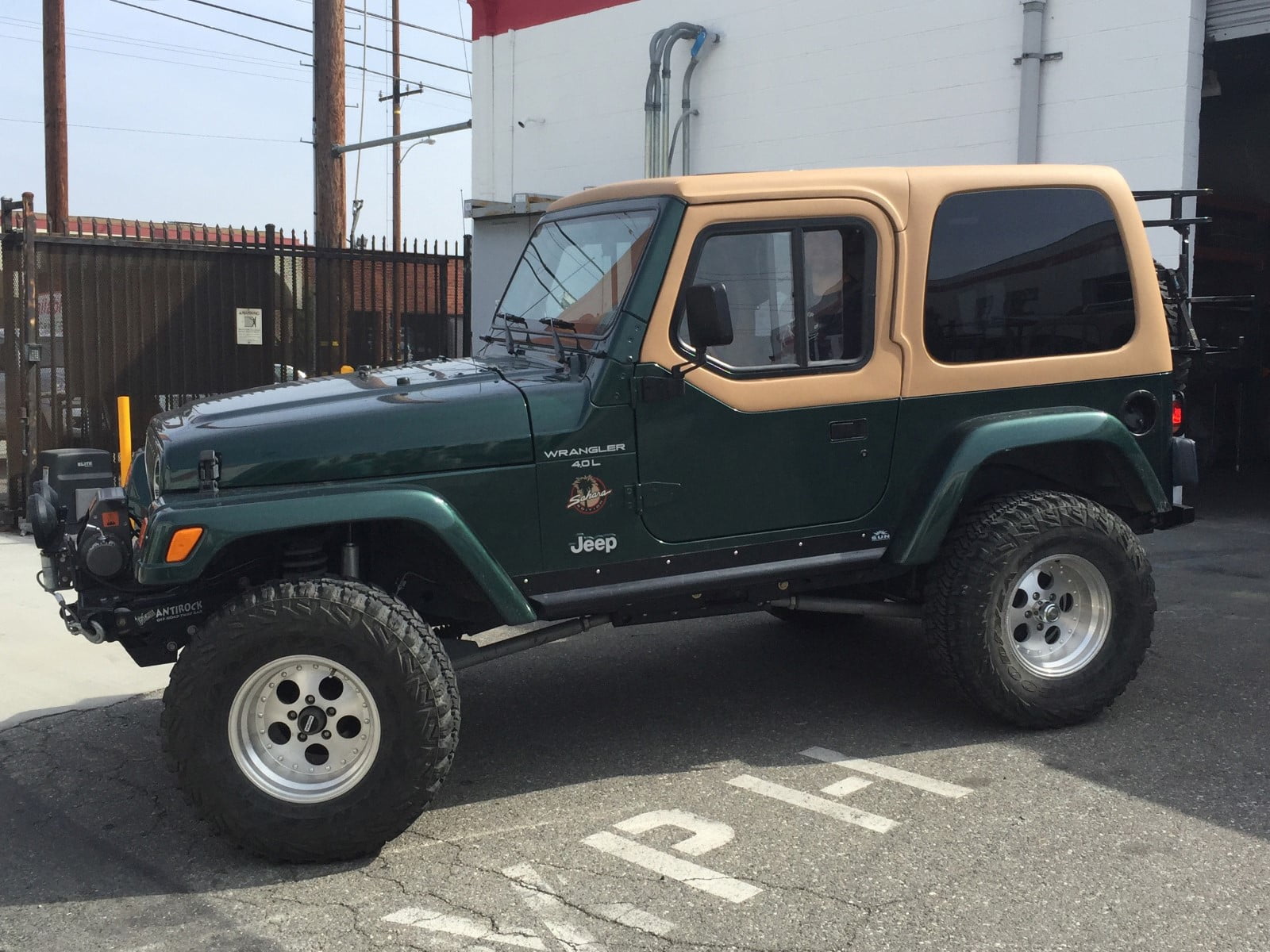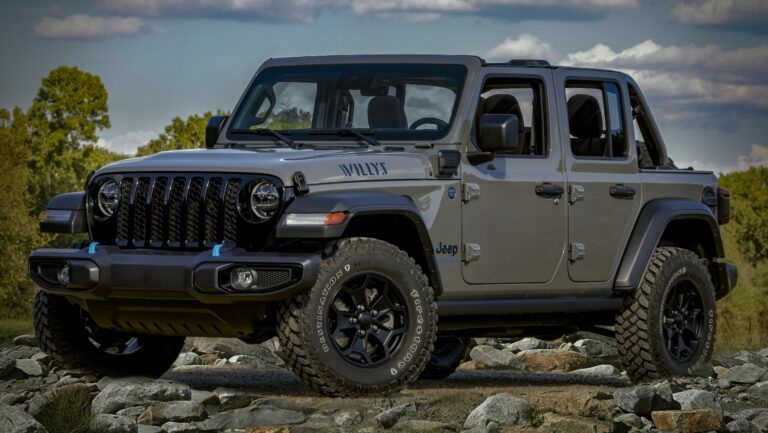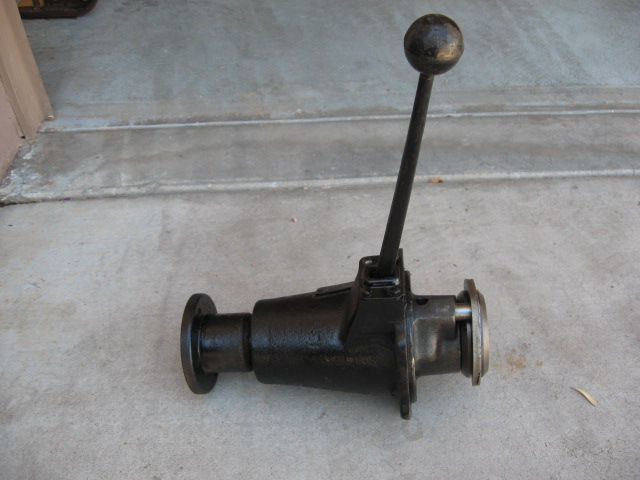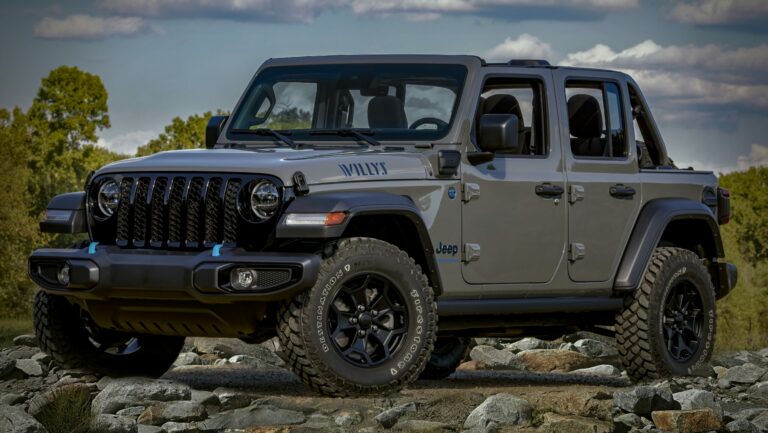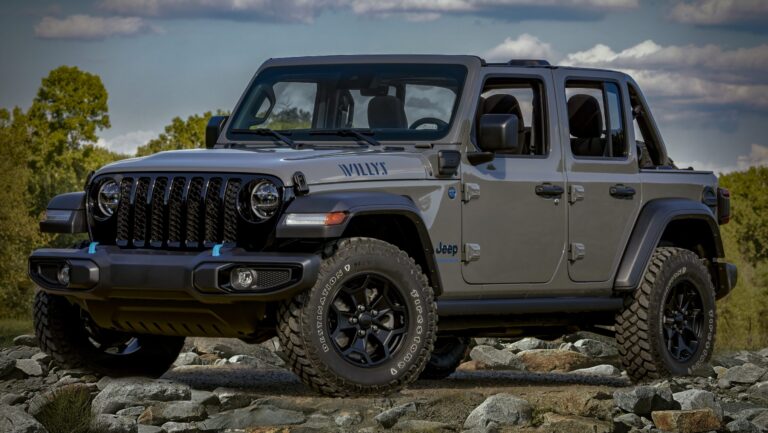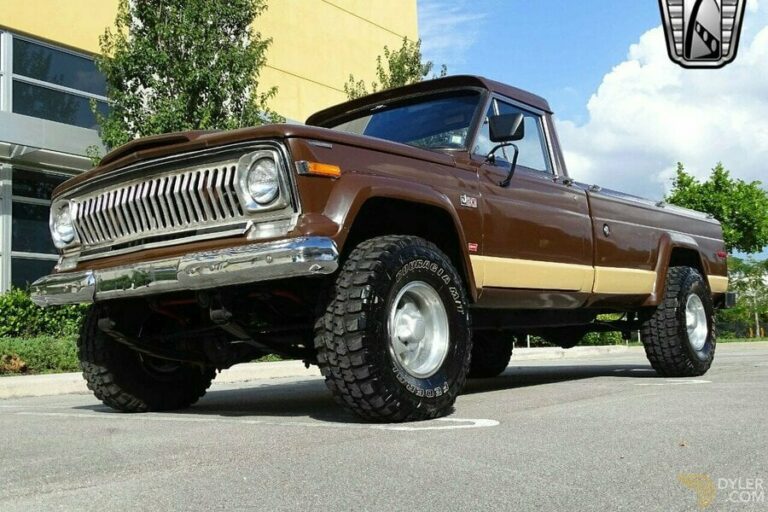1997 Jeep Hardtop For Sale: A Comprehensive Buyer’s & Seller’s Guide
1997 Jeep Hardtop For Sale: A Comprehensive Buyer’s & Seller’s Guide jeeps.truckstrend.com
Introduction: The Enduring Allure of the 1997 Jeep Wrangler TJ Hardtop
The year 1997 marked a pivotal moment in the storied history of the Jeep Wrangler, ushering in the TJ generation. Replacing the beloved but leaf-sprung YJ, the TJ brought coil spring suspension to all four corners, significantly improving ride comfort and articulation, while crucially retaining the iconic round headlights that fans had sorely missed. Among the various configurations, the 1997 Jeep Hardtop stands out as a particularly desirable option for many enthusiasts and practical drivers alike.
1997 Jeep Hardtop For Sale: A Comprehensive Buyer’s & Seller’s Guide
This comprehensive guide delves into everything you need to know about a 1997 Jeep Hardtop for sale, whether you’re a prospective buyer eager to join the Jeep community or a current owner looking to part ways with your beloved off-roader. We’ll explore what makes this specific model year special, what to look for, how to prepare for a sale or purchase, and what to expect from ownership. The 1997 TJ Hardtop isn’t just a vehicle; it’s a gateway to adventure, a canvas for customization, and a testament to enduring American automotive design. Its robust simplicity and legendary capability ensure its continued relevance and demand in the used vehicle market.
Why the 1997 Jeep Wrangler TJ Hardtop Holds Special Appeal
The 1997 Jeep Wrangler TJ represents a sweet spot for many Jeep aficionados. It perfectly blends the rugged, no-nonsense character of older Jeeps with modern amenities and a vastly improved ride quality.
- Coil Spring Suspension: The most significant upgrade from the YJ, the TJ’s coil springs provided a more comfortable on-road experience and superior off-road articulation, making it highly capable right off the showroom floor.
- Iconic Design: Reintroducing the classic round headlights and a more refined yet still unmistakable Jeep silhouette, the TJ’s design is timeless. The hardtop version, in particular, offers a clean, enclosed look that appeals to those seeking more security, better insulation, and a quieter ride than a soft top.
- Engine Options: The 1997 TJ was typically available with two robust engine choices: the venerable 4.0L inline-six (I6) and the more economical 2.5L inline-four (I4). The 4.0L is legendary for its torque, durability, and relatively simple mechanics, making it a highly sought-after powerplant.
- Aftermarket Support: The TJ platform boasts an unparalleled aftermarket, meaning parts, accessories, and customization options are virtually limitless. This allows owners to tailor their Jeep precisely to their needs, whether for extreme rock crawling, overlanding, or simply daily driving with a unique flair.
- Durability and Simplicity: TJs are known for their rugged construction and straightforward mechanicals, making them relatively easy to maintain and repair for those with basic mechanical knowledge.

The hardtop itself adds significant value, providing enhanced security against theft, superior thermal and acoustic insulation for a more comfortable cabin in extreme weather, and a more robust appearance. While removable, it transforms the open-air experience into a more car-like ride when needed.
Key Aspects and Considerations When Buying a 1997 Jeep Hardtop
Purchasing a 25-year-old vehicle, especially one designed for off-road use, requires diligence. Here’s a comprehensive guide to what a prospective buyer should scrutinize.

1. The Hardtop Itself
While the focus is on the vehicle, inspect the hardtop thoroughly.
- Cracks and Damage: Look for hairline cracks, especially around mounting points, windows, and seams. These can lead to leaks.
- Window Seals: Ensure all window seals are intact and pliable, not brittle or cracked. Water leaks are common if seals are compromised.
- Mounting Hardware: Check that all latches, bolts, and clamps used to secure the hardtop to the body are present and functional.
- Headliner: Inspect the interior headliner for signs of water damage, mold, or excessive wear.
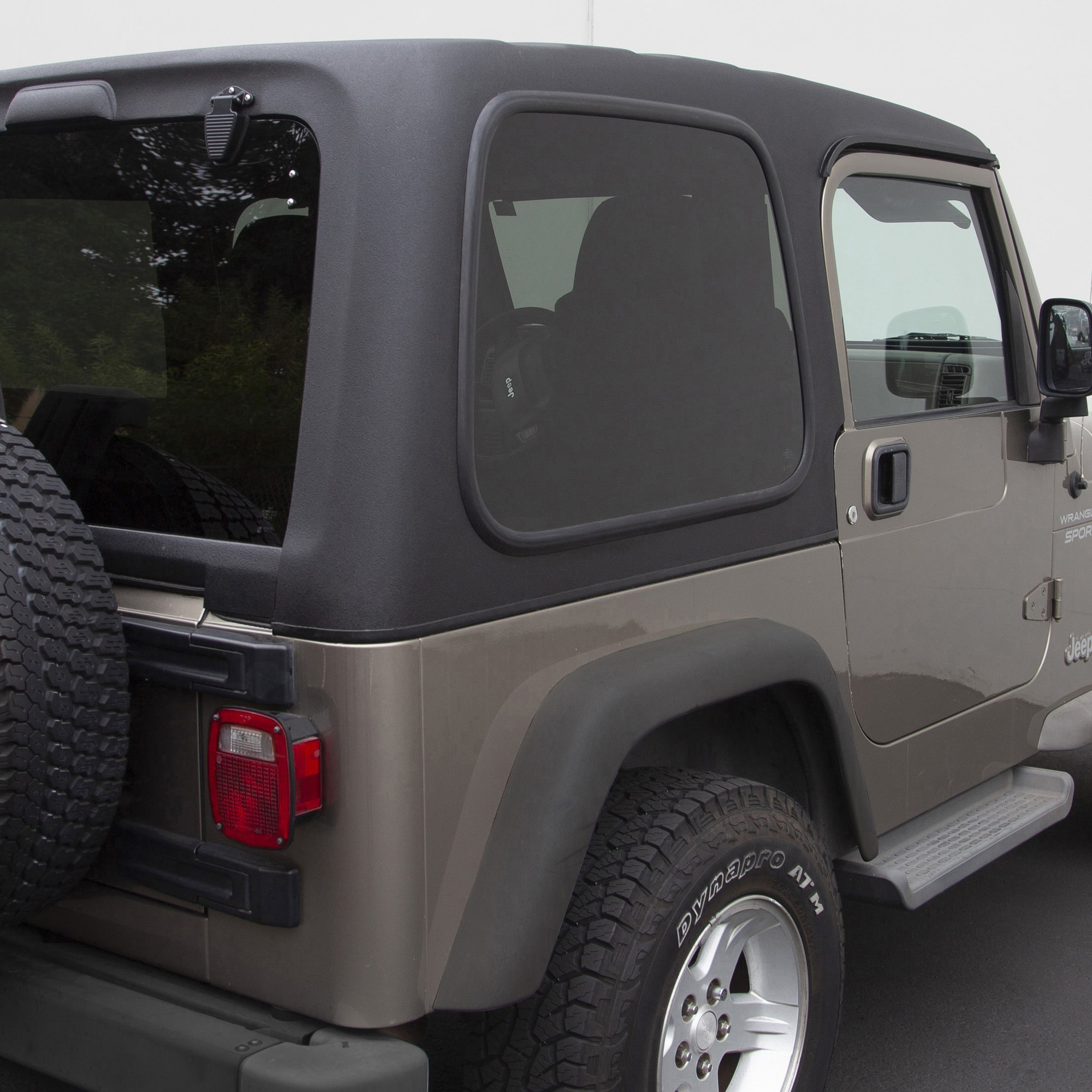
2. Rust: The Silent Killer
Rust is the Achilles’ heel of many older Jeeps. It’s critical to inspect thoroughly.
- Frame: This is paramount. Inspect the frame rails, especially near the control arm mounts, skid plates, and suspension mounting points. Look for flaking, bubbling, or perforations. A heavily rusted frame can be a deal-breaker.
- Body: Check the floorboards (especially under the carpet), rocker panels, wheel wells, and behind the fender flares. Door hinges are also prone to rust.
- Underbody Components: Examine suspension components, exhaust system, and brake lines for severe corrosion.
3. Mechanical Health
A pre-purchase inspection by a trusted mechanic is highly recommended.
- Engine: Listen for unusual noises (knocks, ticks, excessive lifter noise), check for leaks (oil, coolant), and observe exhaust smoke color. Ensure proper fluid levels and clarity. The 4.0L is robust, but issues like the "T-case drop" can indicate past stress.
- Transmission: For manuals, check clutch engagement and listen for grinding. For automatics, ensure smooth shifts without slipping or harsh engagement.
- 4×4 System: Engage 4-high and 4-low. Test the transfer case shifter for smooth operation. Listen for clunking or grinding noises. Ensure the front axle engages.
- Suspension and Steering: Check for worn ball joints, tie rod ends, control arm bushings, and shocks. Excessive play in the steering wheel or a "death wobble" (violent shaking at speed) can indicate worn steering components or improper alignment.
- Brakes: Test pedal feel and stopping power. Check for pulsation, pulling, or grinding noises. Inspect rotors and pads.
- Tires: Look for even wear. Mismatched tires or severe uneven wear can indicate alignment issues or worn suspension.
4. Interior and Electrical
- Seats and Upholstery: Check for rips, tears, and excessive wear. Jeep seats are often exposed to the elements.
- Gauges and Lights: Ensure all dashboard lights, gauges, and interior/exterior lighting work correctly.
- HVAC: Test the heater and air conditioning.
- Windows and Locks: Verify proper operation of manual or power windows and door locks.
- Stereo: Test the sound system.
5. Documentation and History
- Service Records: A well-documented maintenance history is invaluable. It shows consistent care and can help predict future needs.
- Ensure the title is clean and clear of liens. Match the VIN on the title to the vehicle.
- Accident History: Ask about any past accidents or major repairs. A vehicle history report (CarFax, AutoCheck) is highly recommended.
Selling Your 1997 Jeep Hardtop: Maximizing Value and Attracting Buyers
If you’re the owner of a 1997 Jeep Hardtop and contemplating a sale, proper preparation can significantly impact your asking price and the speed of the sale.
1. Preparation is Key
- Thorough Cleaning: Detail the interior and exterior. Clean under the hood and underneath the vehicle. A clean vehicle suggests a well-cared-for one.
- Addressing Minor Issues: Fix small, inexpensive problems like burnt-out bulbs, non-working power outlets, or minor leaks. These often deter buyers disproportionately to their cost.
- Basic Maintenance: Ensure all fluids are topped off and clean. Check tire pressure. If due, consider an oil change or other basic service.
- Hardtop Presentation: Ensure the hardtop is clean, its windows are clear, and all mounting hardware is present. Highlight its benefits in your listing.
2. Documentation and Transparency
- Organize Records: Gather all service records, maintenance receipts, and original owner’s manuals. This builds trust and justifies your asking price.
- Be Honest About Flaws: Disclose any known issues (e.g., minor rust, a slight leak, a noisy U-joint). Transparency builds trust and prevents issues later.
- Vehicle History Report: Consider running a report yourself and providing it to serious buyers.
3. Photography and Listing
- High-Quality Photos: Take clear, well-lit photos from multiple angles (exterior, interior, engine bay, undercarriage if possible). Highlight unique features or upgrades. Include photos of the hardtop both on and off (if easily removable).
- Detailed Description: Write a compelling description. Include:
- Year, Make, Model (1997 Jeep Wrangler TJ Hardtop)
- Mileage
- Engine type (4.0L or 2.5L) and transmission
- Any modifications or upgrades (lift kit, tires, aftermarket bumpers, winch, etc.)
- Maintenance history highlights
- Reason for selling
- Condition (be specific about any flaws)
- Key features like the hardtop, air conditioning, cruise control, etc.
- Pricing Strategy: Research similar vehicles in your area and online. Factor in condition, mileage, modifications, and the specific hardtop option. Price competitively but leave room for negotiation.
4. Choosing the Right Platform
- Online Marketplaces: Craigslist, Facebook Marketplace, eBay Motors, AutoTrader, Cars.com are popular.
- Jeep-Specific Forums/Groups: Online forums and local Jeep clubs often have classified sections where you can reach dedicated enthusiasts.
5. Dealing with Buyers
- Be Responsive: Reply promptly to inquiries.
- Safety First: Meet in a public place. If offering a test drive, accompany the buyer.
- Negotiation: Be prepared to negotiate, but stick to your bottom line.
- Finalizing the Sale: Have a bill of sale prepared. Understand your local DMV requirements for title transfer.
Benefits and Challenges of Owning a 1997 Jeep Hardtop
Benefits:
- Unmatched Off-Road Capability: The TJ’s short wheelbase, solid axles, and robust 4×4 system make it incredibly capable off-road.
- Customization Heaven: The aftermarket support is phenomenal, allowing for endless personalization.
- Strong Community: Owning a Jeep connects you to a vast and passionate community of fellow enthusiasts.
- Excellent Resale Value: Well-maintained TJs hold their value remarkably well.
- Open-Air Freedom (with Hardtop Removal): While a hardtop, it’s still a Jeep. When removed, it offers a convertible-like experience.
- Practicality of the Hardtop: Better security, quieter ride, improved insulation, and a more "finished" look.
Challenges:
- Fuel Economy: Especially with the 4.0L engine, lifted suspension, and larger tires, fuel economy is not a strong suit.
- Ride Comfort: While improved over the YJ, it’s still a body-on-frame SUV with solid axles. The ride can be bouncy or firm compared to modern crossovers.
- Rust: As mentioned, rust is a persistent enemy, especially in areas with road salt.
- Common Issues: "Death wobble" (fixable), leaky seals (common in older Jeeps), and some electrical gremlins can occur.
- Noise: Even with a hardtop, the cabin can be noisy at highway speeds due to the upright windshield and less aerodynamic design.
Solutions to Challenges: Proactive rust prevention, addressing "death wobble" with quality steering components, routine maintenance, and embracing the quirks as part of the Jeep experience. The aftermarket provides solutions for many common issues.
Typical Pricing Factors and Ranges for a 1997 Jeep Wrangler Hardtop
The price of a 1997 Jeep Wrangler Hardtop can vary significantly based on numerous factors. This table provides a general guideline. These are hypothetical ranges and can fluctuate based on market demand, regional differences, and specific vehicle history.
| Factor | Impact on Price | Typical Price Range (USD) |
|---|---|---|
| Overall Condition | Excellent: Meticulously maintained, no rust, low mileage, all original or quality upgrades, complete service records. | $12,000 – $18,000+ |
| Good: Well-maintained, minor cosmetic flaws, some minor surface rust (addressed), moderate mileage, good running condition. | $8,000 – $12,000 | |
| Fair: Drivable, but with visible wear, some rust, higher mileage, needs some repairs or significant cosmetic attention. | $5,000 – $8,000 | |
| Poor/Project: Significant rust, major mechanical issues, non-running, requires extensive restoration. | Under $5,000 (often as a parts vehicle or complete rebuild project) | |
| Mileage | Lower mileage (under 100k) commands a premium. Higher mileage (over 150k-200k) lowers value unless extensively rebuilt. | Varies within condition ranges |
| Engine Type | 4.0L I6 typically commands a premium over the 2.5L I4 due to power and legendary reliability. | 4.0L: Higher end of ranges; 2.5L: Lower end of ranges |
| Transmission | Manual transmissions are often preferred by enthusiasts and may fetch a slightly higher price. Automatics are also desirable for daily driving. | Generally similar, manual might have slight edge for some buyers |
| Hardtop Included | Significantly adds value compared to a soft-top only vehicle. | Included in the above ranges for hardtop models |
| Modifications/Upgrades | Quality lift kits, larger tires, aftermarket bumpers, winches, lockers, and other off-road accessories can increase value if done well. | Can add $1,000 – $5,000+ to price, depending on quality/extent |
| Rust Severity | The presence and extent of frame/body rust is the single biggest determinant of value. Minimal rust increases value dramatically. | Severe rust can drop price by thousands or make it unsellable |
| Maintenance History | Comprehensive service records demonstrate care and justify a higher price. | Can add $500 – $1,500 |
| Geographic Location | Prices can vary by region due to demand, climate (rust risk), and local market conditions. | Variable |
Note: This table provides estimated ranges. Always consult current market listings and consider a pre-purchase inspection for an accurate valuation.
Frequently Asked Questions (FAQ) about the 1997 Jeep Hardtop
Q1: Is the 1997 Jeep Wrangler a reliable vehicle?
A1: Yes, the 1997 Jeep Wrangler (TJ) is generally considered very reliable, especially models equipped with the 4.0L inline-six engine. Its robust, simple design contributes to its longevity, provided it’s been well-maintained and rust is not an issue.
Q2: How difficult is it to remove the hardtop?
A2: The hardtop on a 1997 TJ is designed to be removable, but it’s heavy and typically requires two people to lift it off safely. Some owners use garage hoist systems for easier removal and storage.
Q3: What’s the difference between the 4.0L and 2.5L engines?
A3: The 4.0L inline-six is the more powerful and popular option, known for its strong torque, especially useful for off-roading and highway driving. The 2.5L inline-four is more fuel-efficient but significantly less powerful, often struggling with highway speeds or larger tires.
Q4: What is "death wobble" and how is it fixed?
A4: "Death wobble" is a violent, uncontrollable shaking of the front end that occurs at certain speeds (usually 45-60 mph) after hitting a bump. It’s caused by worn or loose steering and suspension components (e.g., ball joints, tie rod ends, track bar bushings, control arm bushings). It’s fixable by diagnosing and replacing the worn parts, often along with a proper alignment.
Q5: Are parts readily available for a 1997 Jeep Wrangler?
A5: Absolutely. The TJ generation has immense aftermarket support, meaning parts for maintenance, repair, and modification are widely available from numerous manufacturers and online retailers.
Q6: What’s the typical fuel economy for a 1997 Jeep Wrangler?
A6: Fuel economy is not a strong point. A 4.0L engine with standard tires might get around 15-18 MPG combined. With larger tires, lift kits, and aftermarket accessories, this can drop significantly, often into the 12-15 MPG range. The 2.5L offers slightly better economy but with less power.
Q7: Can a 1997 Jeep Hardtop be used as a daily driver?
A7: Yes, many people use them as daily drivers. However, be aware that they are not as refined, quiet, or fuel-efficient as modern SUVs. The hardtop does improve comfort compared to a soft top, making it more tolerable for daily commuting, especially in colder climates.
Conclusion: The Enduring Legacy of the 1997 Jeep Hardtop
The 1997 Jeep Wrangler Hardtop, representing the inaugural year of the beloved TJ generation, remains a highly sought-after vehicle for its unique blend of classic Jeep aesthetics, improved modern comfort, and legendary off-road prowess. Whether you are a first-time Jeep owner or a seasoned enthusiast, this model offers a truly engaging driving experience and a canvas for endless adventure.
For buyers, diligent inspection, especially for rust and mechanical integrity, is paramount. For sellers, proper preparation and transparent communication will ensure a smooth and successful transaction. Owning a 1997 Jeep Hardtop is more than just owning a vehicle; it’s an entry into a passionate community and a commitment to a lifestyle defined by freedom, exploration, and rugged individuality. With proper care, a 1997 TJ Hardtop will continue to deliver thrills and reliable service for many years to come, making it a sound investment for any automotive enthusiast.

